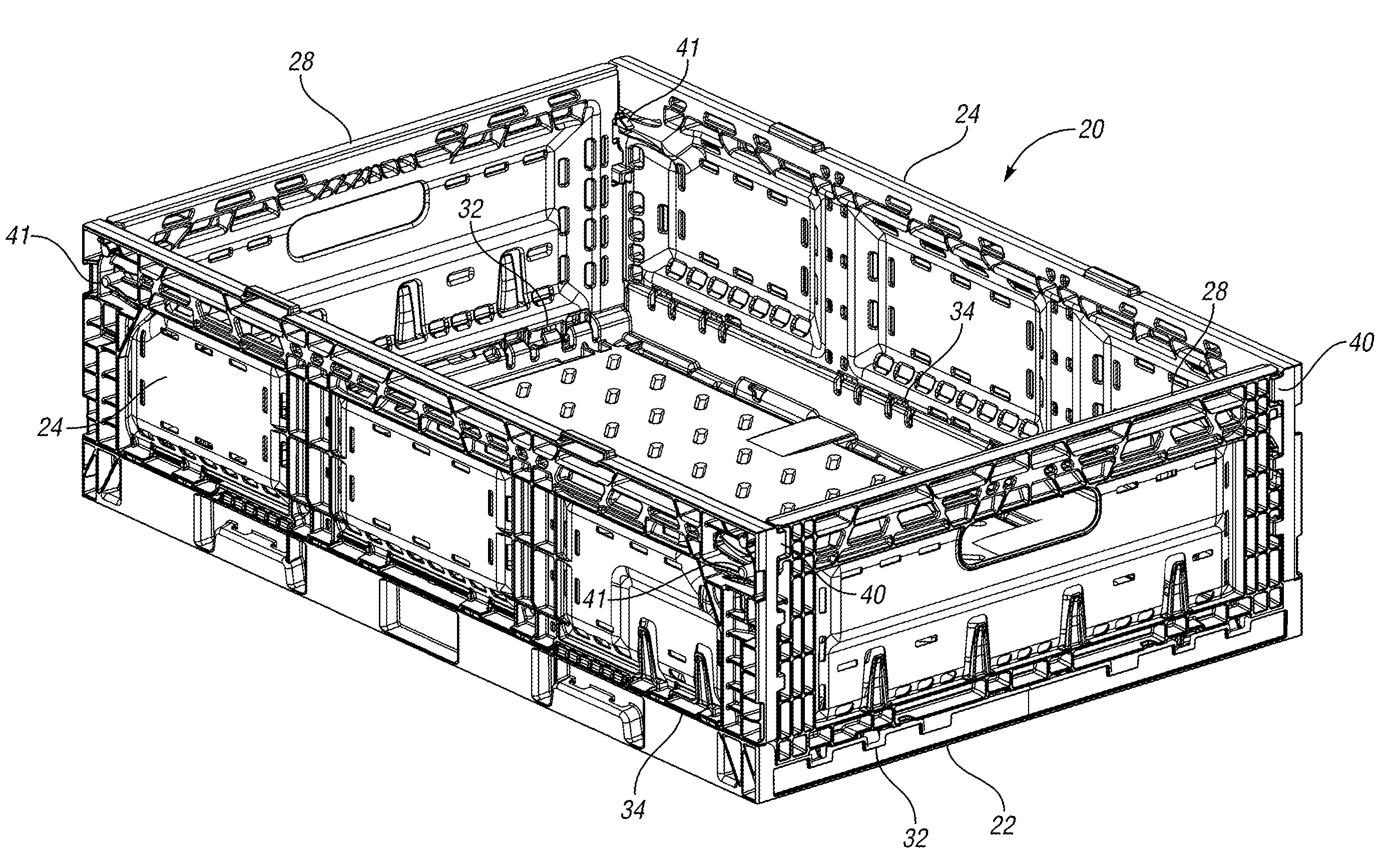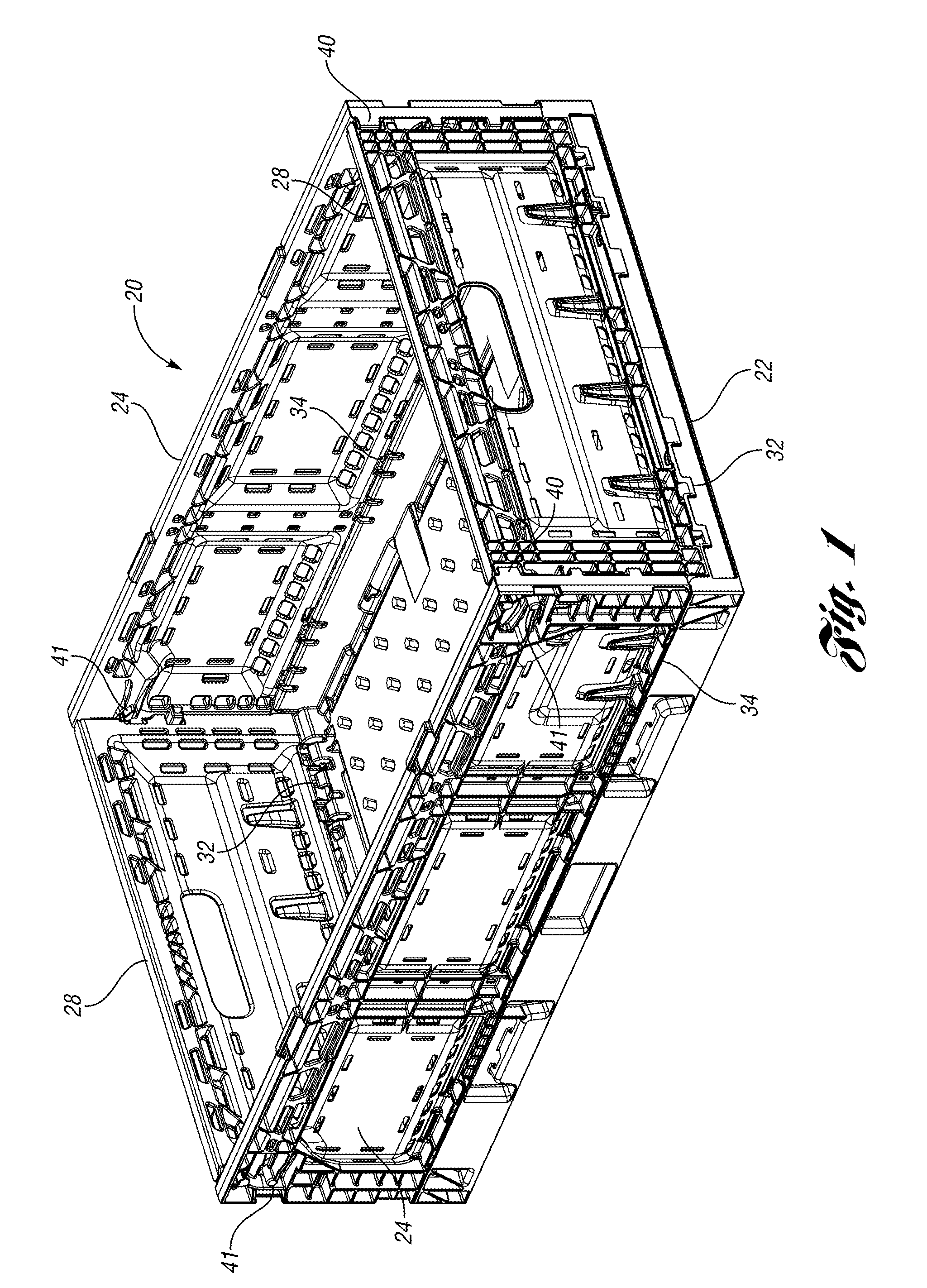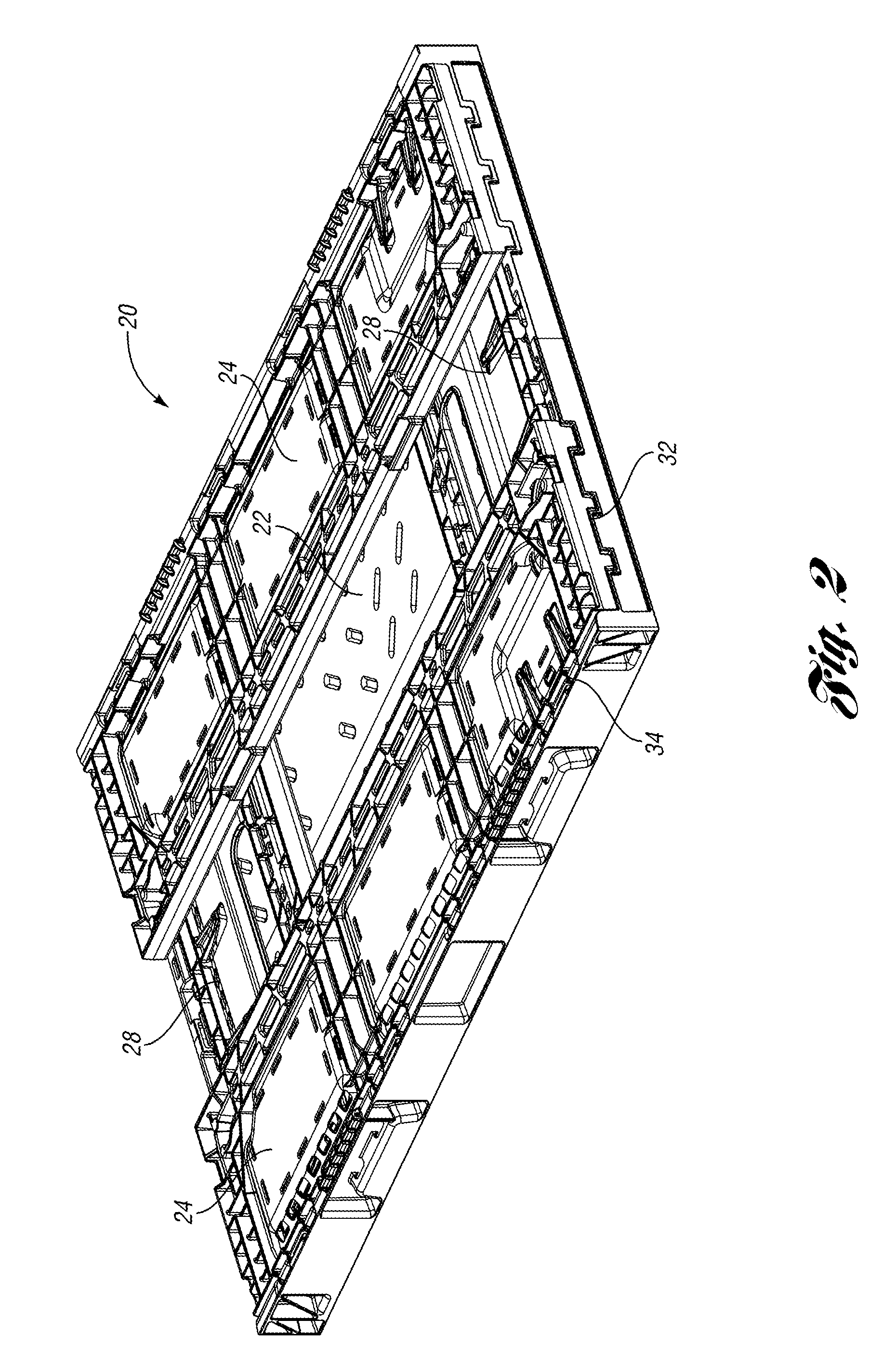Collapsible Container
a container and latch technology, applied in the field of latching for collapsible containers, can solve the problems of easy collapse of walls, inability to lock upright walls, and inability to forcefully knock down walls,
- Summary
- Abstract
- Description
- Claims
- Application Information
AI Technical Summary
Benefits of technology
Problems solved by technology
Method used
Image
Examples
Embodiment Construction
[0024]One possible embodiment of the collapsible container 20 of the present invention is shown in FIG. 1. The collapsible container 20 includes a base 22, side walls 24, and end walls 28. As is known, the walls 24, 28 are moveable about hinges 32, 34 between an upright erect position, generally perpendicular to the base 22 (as shown in FIG. 1) to a collapsed position on the base 22, generally parallel to the base 22 (as shown in FIG. 2). Each side wall 24 includes two flange portions 40 extending perpendicular to the side wall 24 and engaging the end walls 28. The collapsible container 20 of the present invention provides improved latches 41 securing each side wall 24 to its adjacent end wall 28.
[0025]FIG. 2 shows the collapsible container 20 of FIG. 1 in the collapsed position, where the end walls 28 and the side walls 24 are collapsed onto the base 22, after pivoting about the hinges 32 and 34 to a position substantially parallel to the base 22.
[0026]FIG. 3 is an enlarged interio...
PUM
 Login to View More
Login to View More Abstract
Description
Claims
Application Information
 Login to View More
Login to View More - R&D
- Intellectual Property
- Life Sciences
- Materials
- Tech Scout
- Unparalleled Data Quality
- Higher Quality Content
- 60% Fewer Hallucinations
Browse by: Latest US Patents, China's latest patents, Technical Efficacy Thesaurus, Application Domain, Technology Topic, Popular Technical Reports.
© 2025 PatSnap. All rights reserved.Legal|Privacy policy|Modern Slavery Act Transparency Statement|Sitemap|About US| Contact US: help@patsnap.com



